With so many months this year spent in national or local lockdown simply staring at the four walls of your home, you may have reached a point where you want to start improving them… and other areas of your home.
Whether you’re a hardened DIY-er or dipping a toe into the toolbox for the very first time, there are plenty of tasks to complete around the home that can save you money, keep you busy and bring the satisfaction of doing it yourself.
12 easy DIY projects
We suggest 12 easy DIY projects you could do around the home right now.
1. Reseal your bath

This might not sound like an easy DIY project, but we promise it is. Remove old sealant with a Stanley knife and scraper, then scrub the join clean. Make sure to fill the bath with water so that it’s at its heaviest before you begin, as you want the gap between tile and tub at its widest when resealing.
When you’re ready, apply the sealant in a steady line along the join with a cartridge gun. If you’ve never used one before, practice first on a piece of card or tile. Smooth the sealant down with a wetted finger or spoon, and give it a day to dry.
We recommend UniBond Go Seal, available on Amazon, as it comes pre-loaded into a cartridge gun so there’s no extra hassle.
2. Fix sticking doors
If your door has always stuck, you’re a victim of shoddy craftsmanship. But even well-installed doors can start to stick after a while, and the problem may lie with the hinges.
Many screws eventually waggle loose of their own accord, causing hinges and doors to sag. First, try tightening every hinge screw with a screwdriver. If that doesn’t work, you could try replacing the screws with longer models that will drive deeper into the wall and draw the door inwards towards the jamb.
If your tinkering doesn’t help, route three is to sand down the contact point, which you can do with a piece of sandpaper wrapped around a wooden block.
3. Bleeding your radiators
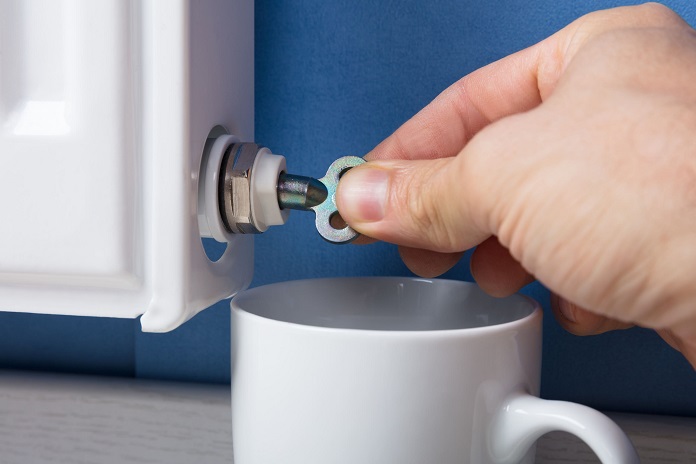
Bottom of the list when it comes to household glamour, bleeding your radiator is nevertheless a nice easy start for a DIY debutante. Run your hand over your radiator, and if it’s cool at the top and warmer near the bottom, that means there’s air in the system and it’s in need of a bleed.
Run your palm across your radiator when it’s turned on. If it’s cool at the top but warm at the bottom that means there’s air in the system, and it’s in need of a bleed.
Turn off your central heating and hold a rag beneath your bleed valve (on the side) to catch any excess moisture. Loosen with a radiator key, wait for the hissing to stop, and re-tighten. Don’t worry if some water comes out looking a bit grubby – that’s normal.
It’s as simple as that. Turn your heating back on and enjoy a well-earned cuppa in the knowledge of a job well done.
4. Insulate your pipework
Is this really an easy DIY project? Yep! It’s a straightforward money saver that should top everyone’s lockdown list. Insulating your plumbing ups efficiency by minimising heat loss, and is so simple it’s barely even DIY. Foam boiler jackets and pipe insulation can be wrapped around by hand, and your main stumbling block is ordering the right size.
Make sure to carefully measure the circumferences of your boiler and pipework before your purchase, and opt for material at least 75mm thick. According to the Energy Saving Trust pipe insulation will pay for itself within two years, while a dedicated boiler jacket will reward your outlay in months.
You should only attempt to insulate exposed plumbing – ie. pipes you can reach with no more than a stepladder. Anything that requires holes in walls should send you running for the phone book.
5. Unblock your sink
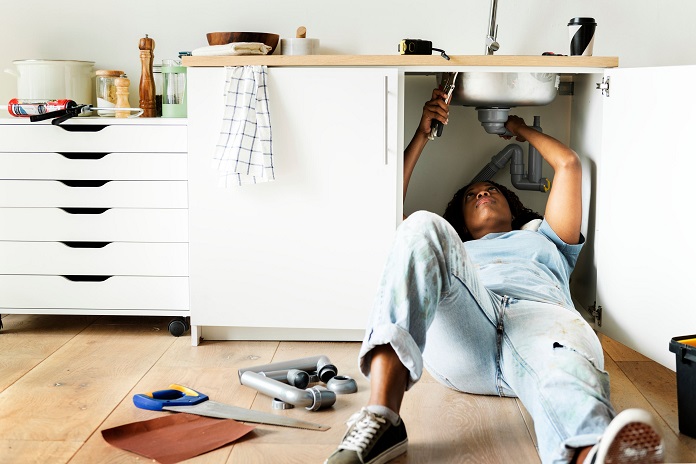
The on-your-back, under-the-sink selfie might look great for a #DIYLife Instagram post, but most blockages won’t need nearly so much elbow grease.
Minor blocks can be dissolved with a couple of teaspoons of baking soda followed by a cup of white vinegar, or with a plunger if you have one around. For more durable substances like hair, try rooting around with a straightened coat hanger, making sure you twist the wire to pick up strands.
If nothing works, unscrew the U-bend – but only after changing into old, disposable clothes. The pipe is usually secured by a large plastic ring-nut beneath the basin, so remove this with a wrench and clear the blockage manually. It sounds obvious, but remember not to wash your hands until the U-bend is firmly back in place.
6. Fill cracks in the walls
Even small cracks can act as a portal for wind, rain and rodents, and ordinary powdered or pre-mixed filler can easily plug holes in the masonry. Thick layers can take up to 24 hours to dry, but once hardened should hold for years.
Cracks that will have to withstand movement – seams, joints, windows and doorways – are best bunged up with caulk, a particularly flexible sealant often used in industry.
7. Draught proof your home
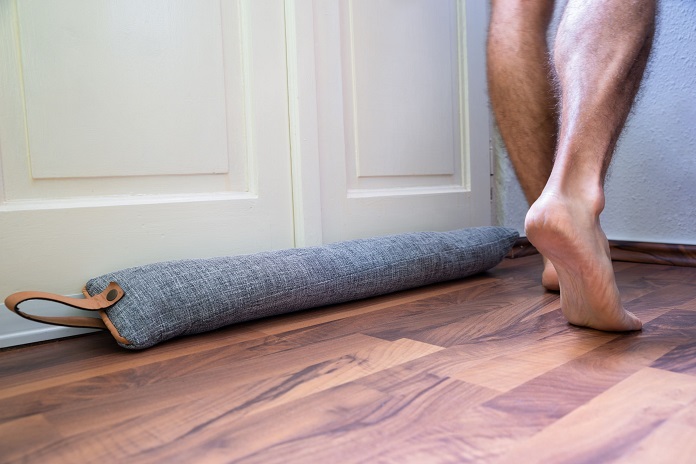
This easy DIY project has to be the simplest one we’re showing you. A classic ‘sausage dog’ draught excluder can work wonders, and you can easily make your own with a sewn up strip of fabric filled with old tights and socks. If that all sounds like too much effort, you can buy one on Amazon to be delivered straight to your door. We like this novelty Country Club herringbone sheep draught excluder to add a bit of fun.
If left unattended, letterboxes and keyholes will circumvent even the best floor defences, so plug them with brushes and covers respectively. The more effectively your home retains heat, the lower your heating bill, so if chilly toes won’t spur you into action, extra spending money might.
8. Put up a simple shelf
Buy a couple of L-shaped brackets online (make sure you get the right screws to go with them), along with a finished shelf or piece of wood. You will also need a drill, and a few rawl plugs to hold the screws in tight.
Mark where you want your shelf on the wall, and ensure there are no electric wires or pipes beneath the plaster. Put up one of the brackets, then use a spirit level – or a spirit level app on your phone – to ensure your shelf will lie flat, before attaching the other bracket and the shelf on top.
9. Clean your gutters
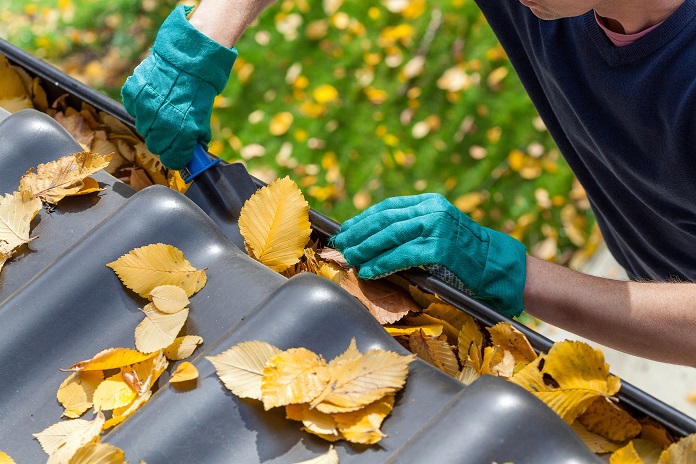
Clogged gutters can cause a build-up of leaves, sludge and rain water which can damage your roof and seep into the walls of your home. They also provide a serviceable nest for rodents, bugs and other pests. This is not only one of our easy DIY projects, but also a fun one too.
The first option is to prop a ladder carefully against your exterior, ready your gloves and trowel, and get stuck in. The second is to snap up an extendable gutter cleaner, like this one from Kingfisher, available on Amazon. It’s somewhere between a hose, a shovel and a periscope which allows you to control proceedings from the ground. It’s eccentric, a little more expensive, and altogether much more fun.
10. Regrouting tiles
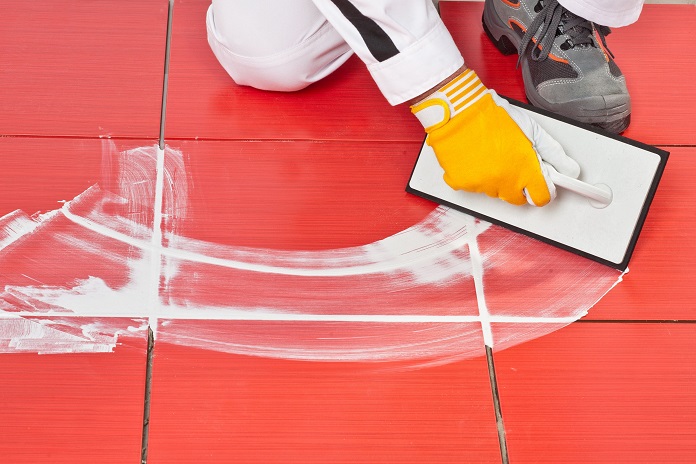
Having poorly grouted tiling is like having dirt under your fingernails – it’s easy to miss but pretty icky, fiddly to fix, and a little bit unhygienic. It’s eminently doable, but depending on the state of your toolbox, may require some new toys.
Grout is made mostly of cement so unwanted material can be tricky to dislodge. Ideally use a manual grout rake or electric grout remover to grind between the tiles, and give your newly grout-free surface a thorough wipe.
Now you’re ready to get grouting. Check that you’re using waterproof grout if working in the bathroom, and then coat a layer of grout onto all the relevant joints using a grout float or grout spreader.
Clean off any excess with a moist sponge, and remember to work steadily – most grout starts to harden in less than half an hour. Perfectionists may then use a grout finisher – a specialised tool with a circular end – to pare down the joins for a crisp, even finish.
11. Replacing a plug fuse
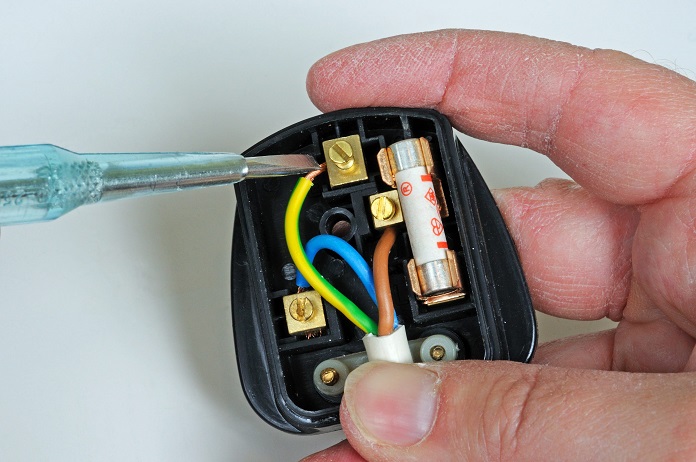
We reckon this task will split people into two groups. Group one will be thinking, ‘Who on Earth doesn’t know how to change a fuse’, while group two will be wondering, ‘What exactly is a fuse, and where does it go?’. Don’t worry, we definitely class this as one of our easy DIY projects.
Fuse-changing is to electrics what radiator-bleeding is to plumbing. Most plugs will either be screw-on or sealed with a removable panel. Just use a screwdriver to either unscrew the face or flick out the panel with the tip.
The cylindrical fuse should be obvious. Lever it out, securely slot in a replacement, plug your device back into the mains, and hope that the fuse was indeed the problem.
One important point to note: Fuses come with different amperage, and using the wrong variety could be dangerous or cause the fuse to blow prematurely. Most – but not all – UK plugs will take a standard 3A or 13A.
12. Building a shed
We know this sounds ambitious, but bear with us. The wonders of the internet mean that you can order a flat-pack shed unit direct to your door. If you can handle an IKEA wardrobe, you can (probably) manage this too. Do check what is (and isn’t) included in the kit, and what level of skill is expected.
You may also be interested in…
This article may include affiliate links to products and services where we may receive a small fee to support the running of this site if you make a purchase or is a sponsored article from one of our select editorial partners providing valuable advice and information to our readers.

































































